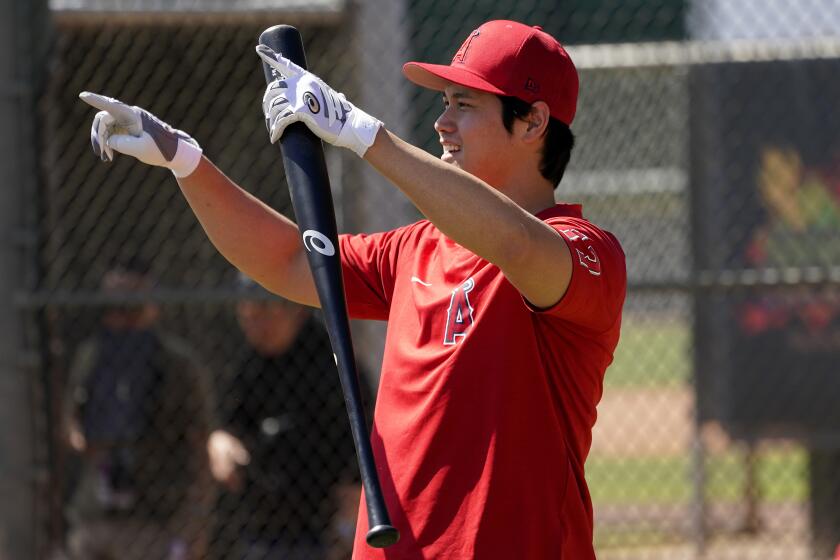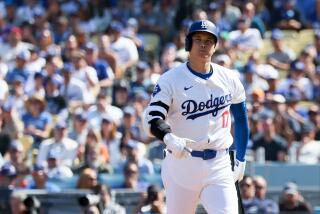Angels’ Shohei Ohtani is ready for the 2022 season: ‘Aim higher and higher’
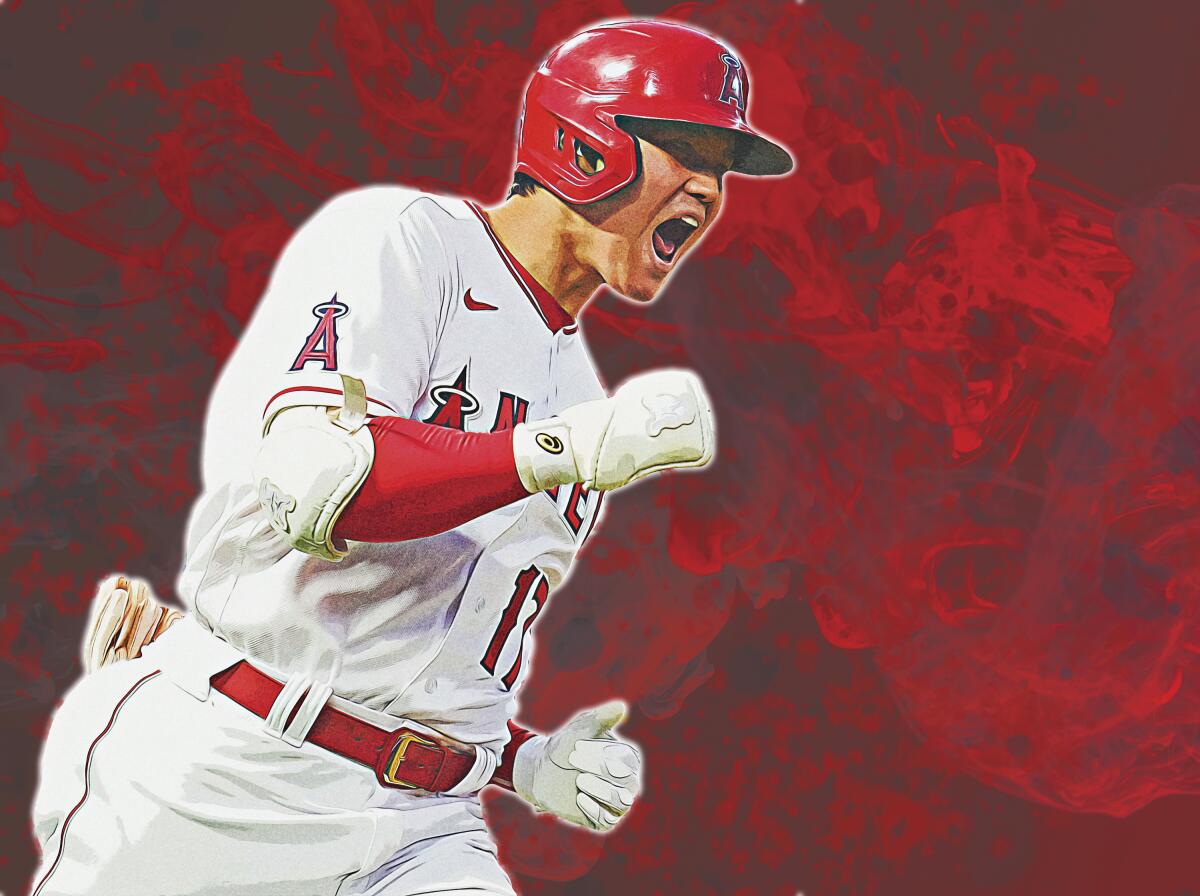
- Share via
TEMPE, Ariz. — It took only a few days with his new club for Angels pitcher Noah Syndergaard to grasp the eminence of Shohei Ohtani, the two-way phenom who was a unanimous choice for American League most valuable player last season.
“Man, the aura around him … ” Syndergaard said during the first week of spring training. “You can definitely tell that there’s a greatness to his presence.”
Syndergaard saw the highlights from 2021 and marveled at Ohtani’s freakish ability to throw a baseball 100 mph and hit one 450 feet. He was in awe of the numbers Ohtani posted in what was arguably the greatest all-around season in baseball history.
And this spring, after signing a one-year, $21-million deal with the Angels in November, Syndergaard got a look under the hood at the engine that drives Ohtani, a work ethic that has become almost legendary and is fueling what seems like an impossible dream for 2022:
That Ohtani can be even better.
“I know how he’s wired, how he’s built, and it’s different,” Angels general manager Perry Minasian said of the 6-foot-4, 225-pound Ohtani. “It’s 24 hours a day, seven days a week.
“He accomplished a lot of the things he wanted to accomplish [last] season, and I know these are lofty expectations, and I know this sounds crazy, but I still think there’s another gear in there, another level. As amazing as last year was, I think he can reach higher levels.”
Angels manager Joe Maddon would gladly take a repeat of 2021, when Ohtani batted .257 with a .965 on-base-plus-slugging percentage, 46 homers, 100 RBIs, 103 runs and 26 stolen bases and went 9-2 with a 3.18 ERA in 23 starts on the mound, striking out 156 and walking 44 in 130 1/3 innings.
“I don’t want to get greedy,” Maddon said.
Ohtani, who is scheduled to pitch the season opener April 7 against the Houston Astros at Angel Stadium, said through an interpreter that he “would like to aim higher and higher” and that if he can stay healthy for the entire season, “I can improve my numbers across the board.”
“I think I’m in a better place than I was at the start last year, including physically.”
— Shohei Ohtani
Two new rules — the adoption of the universal designated hitter and the so-called “Ohtani rule,” which will allow a player to start a game as a pitcher and DH and continue as DH when he is no longer pitching — should help.
Ohtani, 27, had 639 plate appearances last season but started only once as a pitcher and appeared seven times as a pinch-hitter in 10 games in National League parks, accumulating 11 plate appearances in all.
The Angels are scheduled to play 10 games in NL parks in 2022. If Ohtani starts them all — two or three on the mound and the rest at DH — he could make 40 to 50 plate appearances in them.
“With the DH in the National League, I will have more opportunities to play,” Ohtani said. “Personally, I think it’s a good thing.”
Ohtani should also benefit from the return of Mike Trout, the three-time AL MVP who suffered a season-ending right calf strain last May 17, and Anthony Rendon, the third baseman who suffered a season-ending right hip injury in early July.
Without the lineup protection of the two sluggers, the left-handed-hitting Ohtani drew as many walks in the final two months (48) as he did in the first four. Ohtani drew three intentional walks in his first three seasons combined — he drew 20 in 2021, including 14 in August and September.
Can Angels pitcher/slugger Shohei Ohtani repeat the incredible two-way numbers that made him the unanimous AL MVP? Those closest to him believe he will.
Pressured to carry the offense, Ohtani expanded his strike zone, producing more swings and misses and weak contact. He had his worst month of the season in August, batting .202 with a .749 OPS.
Teams in contention rarely threw Ohtani a strike. The Astros, for instance, walked Ohtani seven times — twice intentionally — in nine plate appearances in two games Sept. 22-23.
“When he gets hot and protected [at the plate] … he didn’t have it at the end of last year, and it was different,” Maddon said. “They didn’t have to pitch to him, so he opened things up that he didn’t normally have to open up.
“With [Trout and Rendon] there, he’ll be more willing or able to accept walks. When those guys weren’t there, I think he felt the responsibility to do more.”
Ohtani spent the winter before the 2021 season completing his rehabilitation from Tommy John surgery, which limited him to 1 2/3 innings combined in 2019 and 2020, and from surgery to repair the bipartite patella tendon in his left knee, which hampered him in 2020.
Though blessed with the lean, athletic build of an Olympic swimmer, Ohtani refined his diet based on blood work to determine what foods best fueled him and tweaked his strength-and-conditioning program.
The Angels also developed a plan last spring to remove restrictions on Ohtani’s usage — eliminating set rules on how often he took the mound, when he would take days off and more — and instead determined his workload based on how he felt throughout the year.
“The biggest thing he and I talk about are his legs,” Maddon said. “If the legs get fatigued, that could lead to a breakdown in other areas of his game, but that’s it. … He’s a great athlete. He’s finely tuned. He works really hard. Let him play.”
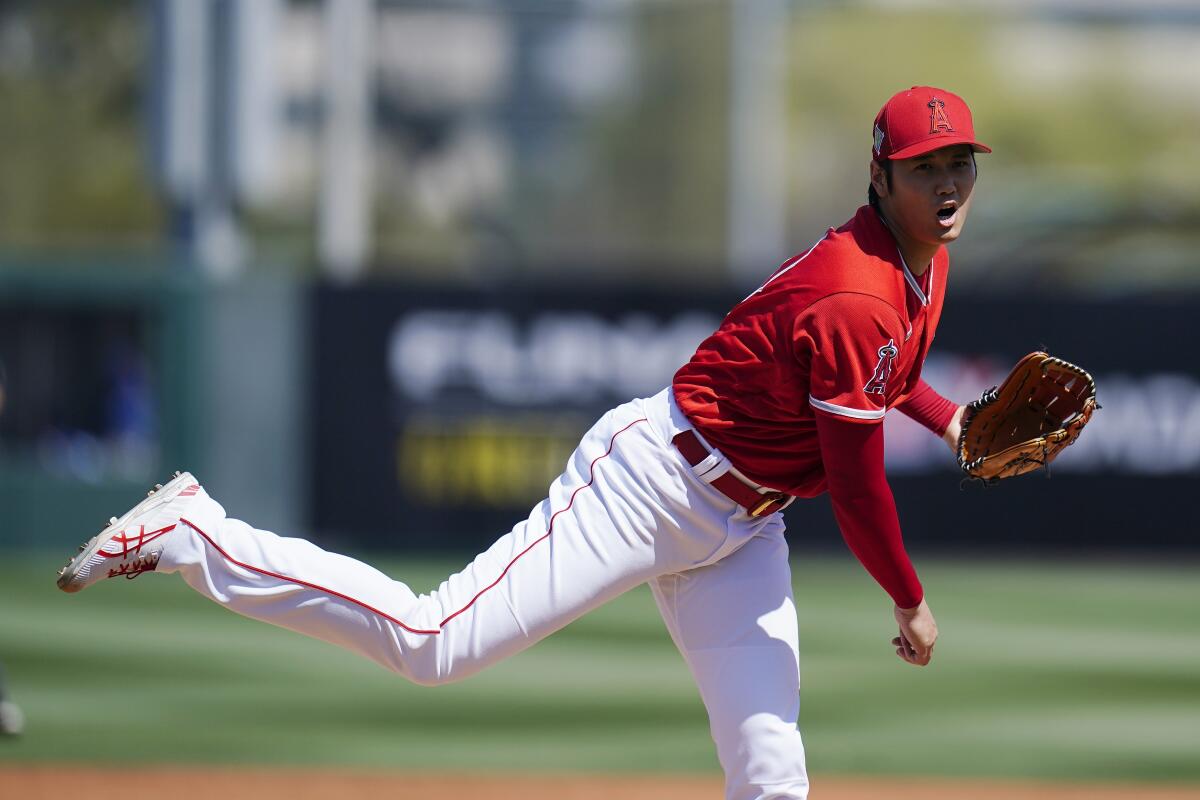
Ohtani thrived with such freedom in 2021, not only maximizing his two-way abilities but pitching and hitting at elite levels, the fluidity and relative ease of his movements on the field defying their degrees of difficulty.
Ohtani didn’t just rank third in baseball in home runs — he crushed the ball so consistently that, according to Baseball Savant, he had the second-highest barrel percentage (12.2%) behind San Diego’s Fernando Tatis Jr. He hit a major league-leading 24 homers with exit velocities of 110 mph or more.
In addition to ranking eighth in stolen bases, Ohtani had the fastest average home-to-first sprint time (4.09 seconds) in the major leagues.
Ohtani gave up two or fewer runs in 17 of 23 starts. He was one of four AL starting pitchers to reach 100 mph with at least 11 pitches. His split-fingered fastball, an 88-mph pitch with 33 inches of vertical drop, produced an .087 (11 for 127) batting average against, the lowest for any pitch in the major leagues.
“He’s just a different animal,” Maddon said. “And he legitimately loves to play and compete. You’d like to think everybody’s the same way, but they’re not. That’s what separates him. He’s not afraid of any situation. The brighter the lights, the more he enjoys it.”
Ohtani showed in 2018, when he was voted AL rookie of the year, and 2019 that he could be a dangerous slugger, but the success — and dominance — he enjoyed in his first full season on the mound has boosted his confidence entering 2022.
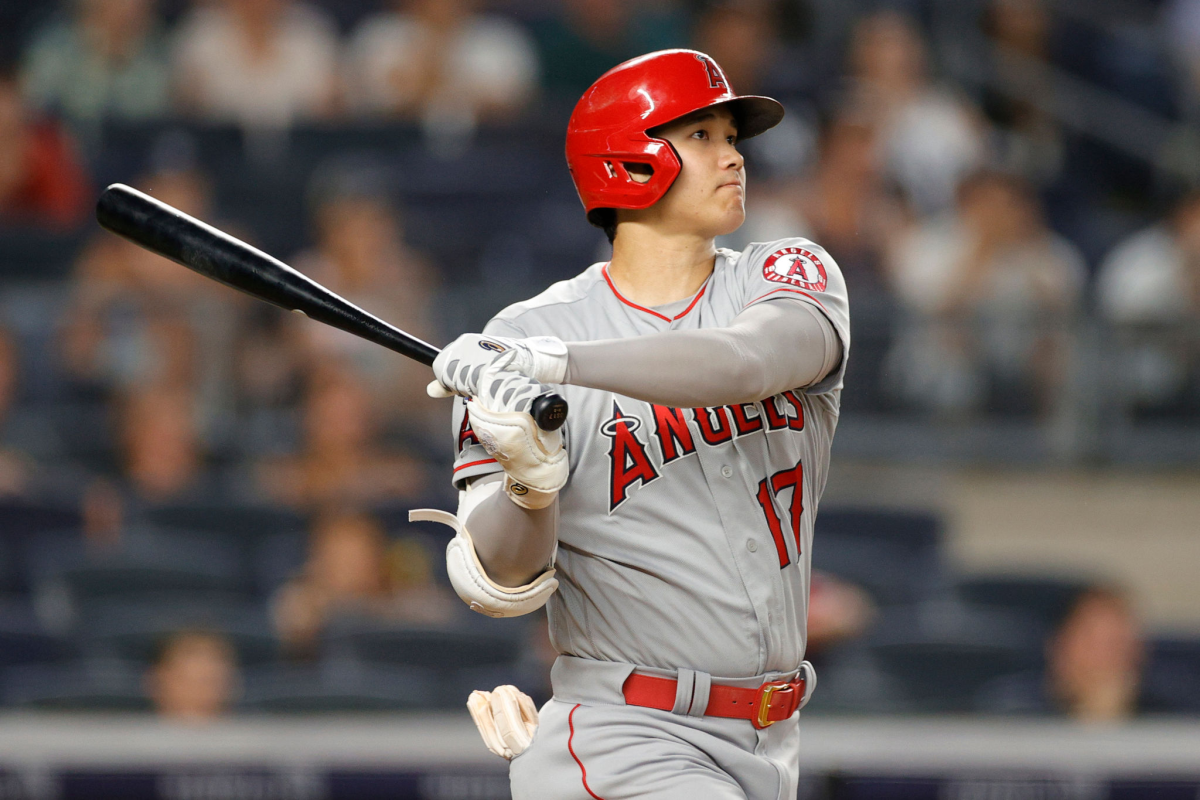
“I think I’m in a better place than I was at the start last year, including physically,” Ohtani said. “There weren’t any major changes [in his offseason regimen or approach to this season]. The first thing is to remain on the path I’m on.”
The right-hander combines a four-seam fastball that averaged 95.6 mph last season with a sharp 82.2-mph slider, his nose-diving splitter, an 86.9-mph cutter and a 74.7-mph curve, giving him multiple weapons with which to attack hitters.
“Some days, he’ll come into the dugout and say, ‘Hey, I’m feeling my slider, let’s go with the slider,’ ” Angels backup catcher Kurt Suzuki said. “And some days, he’s like, ‘Hey, my split is really good today, let’s use it.’ Or the curve or cutter is good.
“The first inning or two, he’s feeling things out, trying to get comfortable, to settle in, like any great pitcher does, and after that, it’s, ‘Let’s go.’ ”
Ohtani had four 10-strikeout games last season and featured a different pitch in three of them, throwing mostly fastballs against Houston on May 11 and Seattle on June 4. But 57 of his 108 pitches against Oakland on Sept. 19 were splitters, and 52 of his 112 pitches against Seattle on Sept. 26 were sliders.
His ability to make adjustments, in game and from start to start, and to manipulate his pitches, changing the velocity of his fastballs and sliders and the shape of his curves, leads Suzuki to believe Ohtani can improve on the mound.
“After last year, I don’t doubt anything that he says he wants to do,” Suzuki said. “The guy will make up a pitch in the bullpen before the game and go out and strike out 15 guys with it. He’s pretty special. If something’s not working, he’ll figure out a way to get you out.”
Ohtani, in the second year of a two-year, $8.5-million contract and under club control through 2023, has shown no signs of complacency this spring.
Angels two-way star Shohei Ohtani views his 2021 MVP season as a baseline for future seasons. That’s the type of news the franchise needs.
That was evident to Max Stassi in February when the catcher spent several weeks before camp catching bullpen sessions and working out with Ohtani at a Driveline facility in the Phoenix area.
“He looks unbelievable,” Stassi said. “You can’t put any limits on him. He’s as hungry as ever. I know he wants to pitch deeper into games. He wants to pitch more. I think it’s going to be another unbelievable year.”
What about the pressure on Ohtani to repeat his 2021 performance, to prove it was no fluke?
“Shohei is hard enough on himself — he wants to prove to himself,” Stassi said. “But as far as outside pressure, he’s the same guy every day, good, bad, OK? He puts the work in day in and day out. He eats, sleeps and breathes baseball and wants to be the best version of himself.”
For a guy who can do it all, that would be more than enough.
More to Read
Go beyond the scoreboard
Get the latest on L.A.'s teams in the daily Sports Report newsletter.
You may occasionally receive promotional content from the Los Angeles Times.



